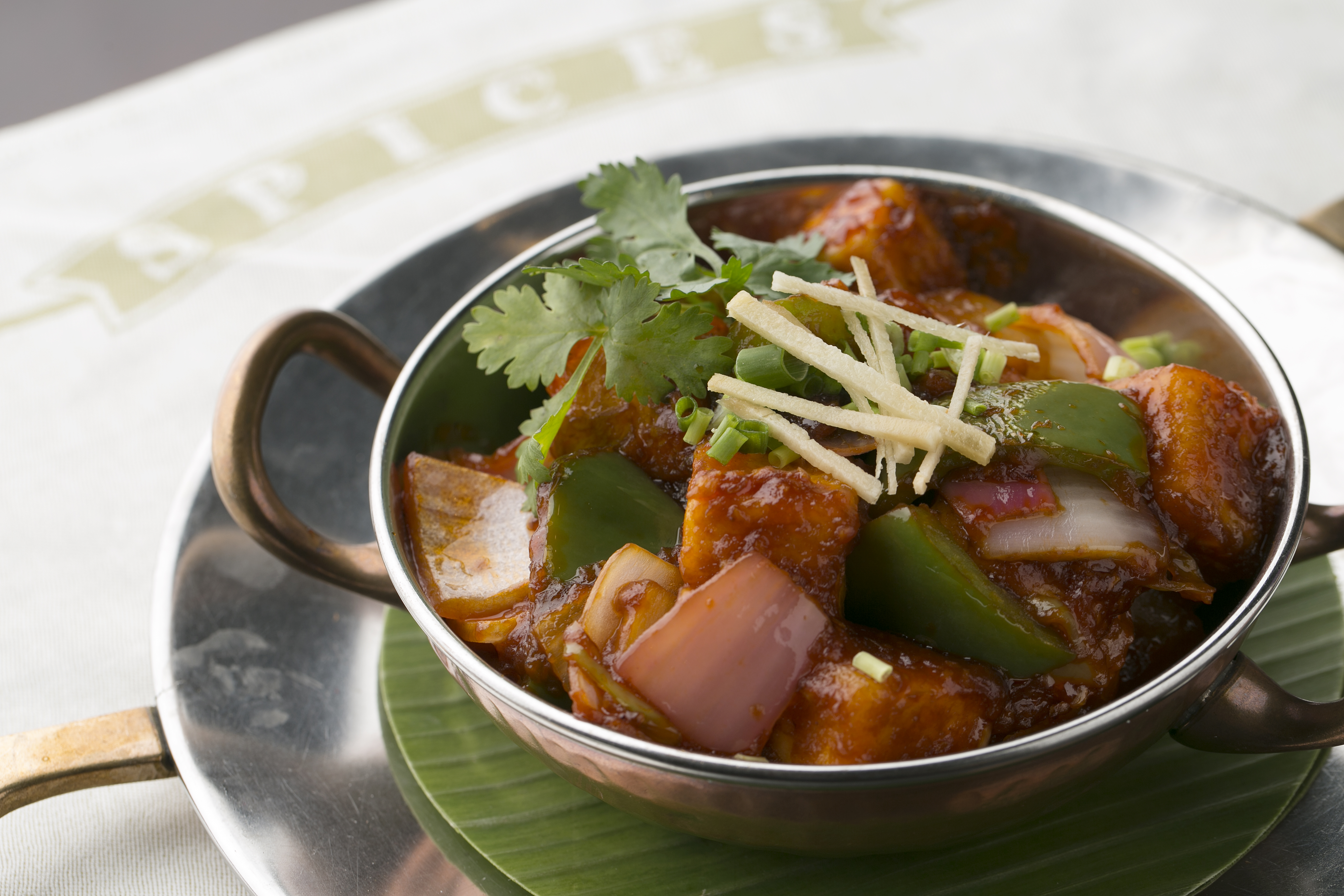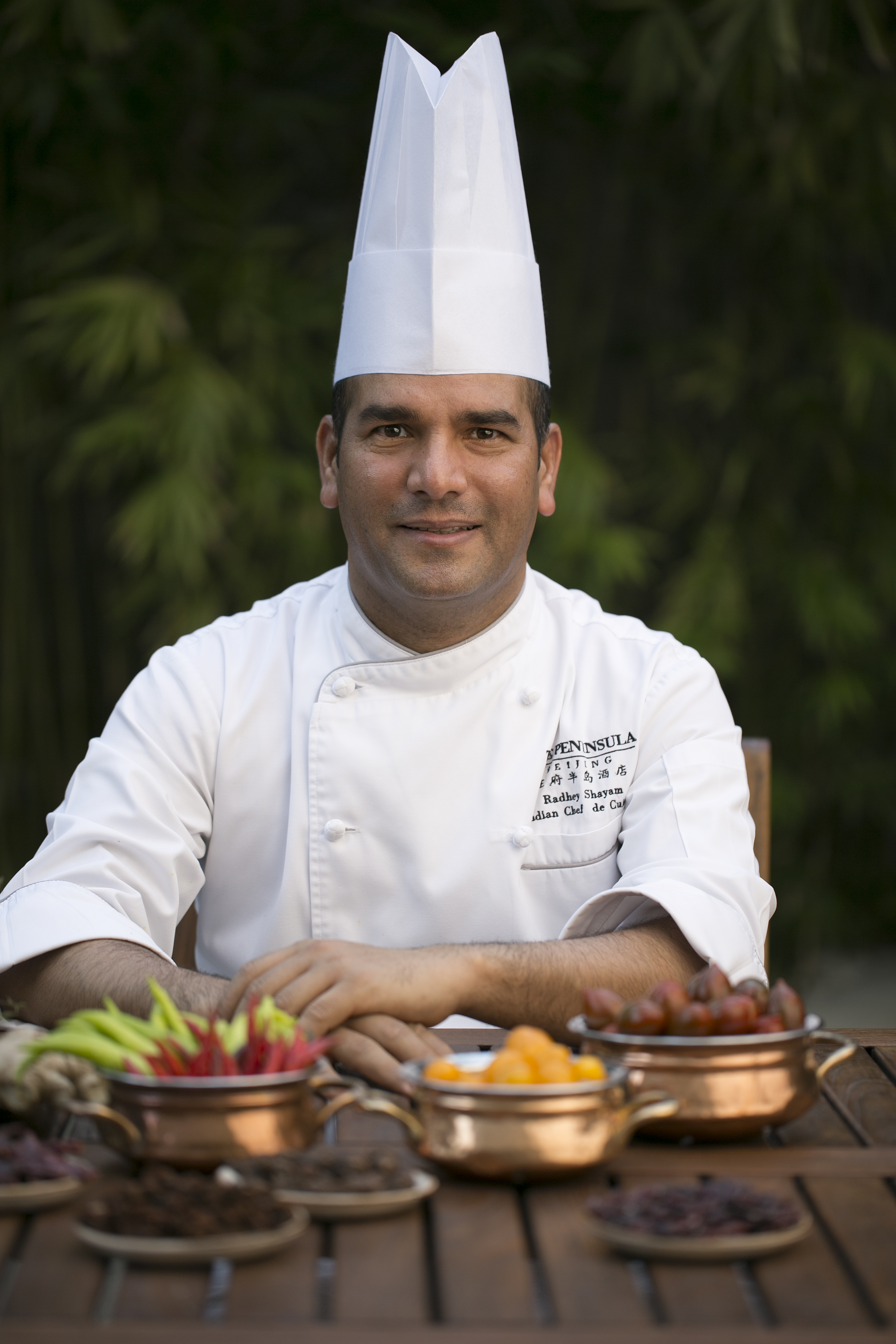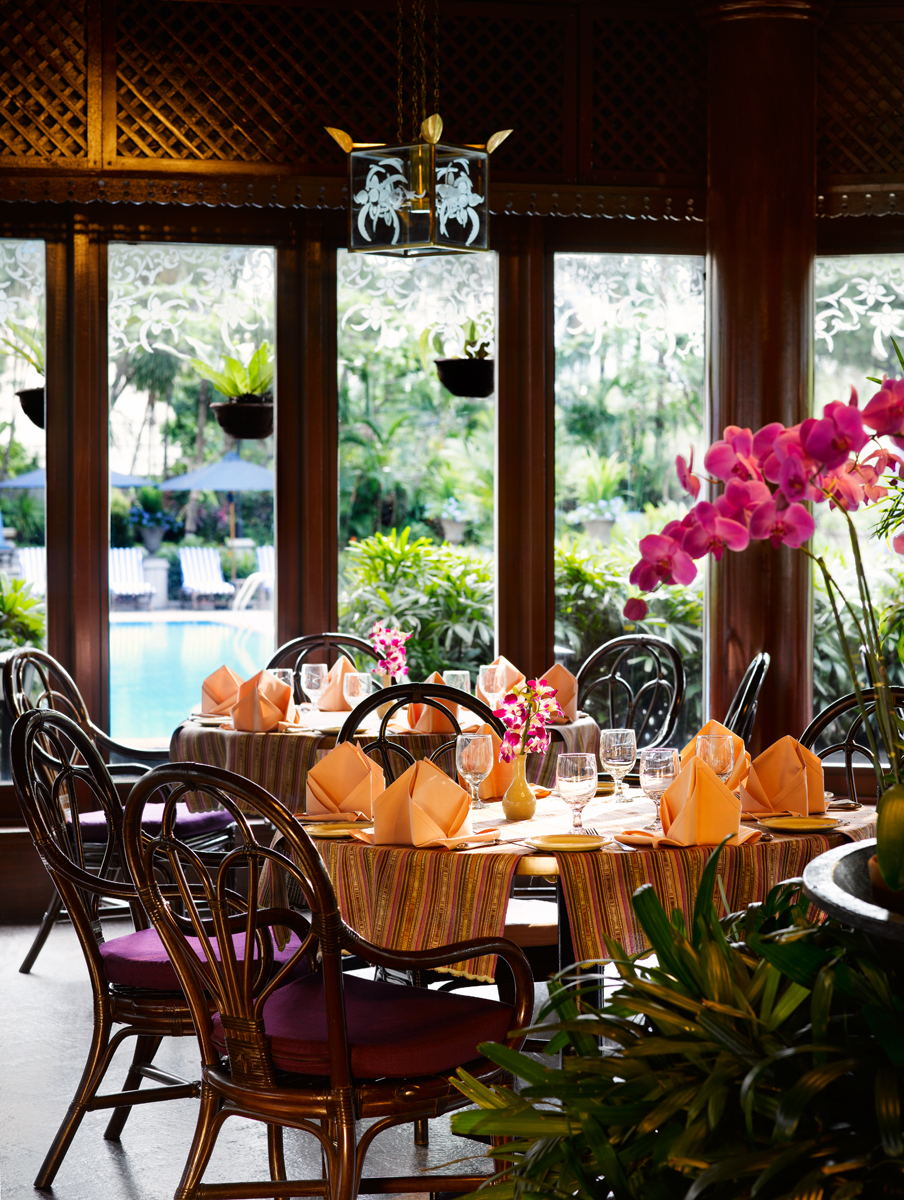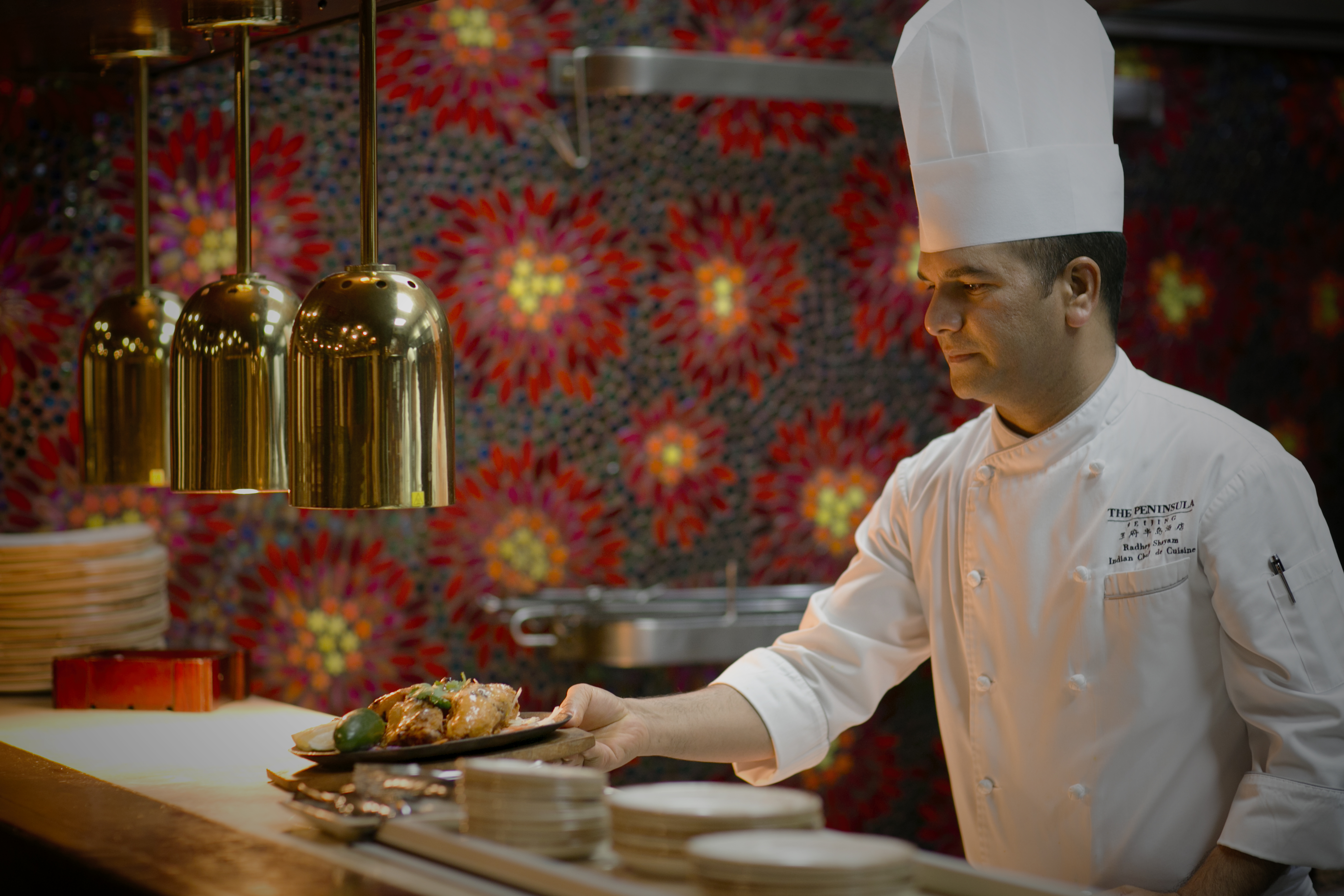
When Indian children are born, their grandparents often write the sacred syllable “om” on their tongue with a finger dipped in honey. “Om” means “I am”, and perhaps it was with his honeyed tongue that The Peninsula’s Indian Specialty Chef Radhey Shayam learned from the very start that, in a metaphysical as well as culinary sense, you are what you eat. Maybe as an infant Chef Radhey smacked his lips loudly enough that the universe took heed and thus placed him on his intended path. And so began a lifelong love of food.
Fortunately, it turned out that the man chosen to satisfy The Peninsula Manila’s guests’ cravings for Indian cuisine – as well as Thai, Vietnamese, Indonesian, and Chinese fare – is an avid eater. And an extremely gifted chef.

He says, “Nobody taught me how to cook. I was living in the kitchen, observing my mother and grandmother cook. When I was 12 or 13 years old, I was asked to cook for 30 people, mostly relatives.”
He remembers the very first dish he cooked—a perfectly done dahl made up of three kilograms of rice and lentils. This was accompanied by the signature dish of his hometown of Rishikesh, a small town in Uttarakhand state near the Himalayan foothills that border Nepal and China, where the practice of yoga is supposed to have originated. Called a Koda Ki Roti, he describes it as “like a brown bread made from finger millet that is locally called kodo and eaten with vegetables, lentils and curry.”
Chef’s whites
But there was a particular person who inspired him to aspire for chef-hood. That was his uncle Vinood Kumar who dressed like the “big chef” that he was for Radhey’s father’s travel and tour agency Nautiyal. The boy spent countless hours beside his Uncle Vinood. “I was inspired by his work. I also liked the chef’s white uniform,” the handsome Spices Indian chef says with a shy smile.
With very little prodding, he was soon attending culinary school in the capital city of Dehradun, before moving to New Delhi where he worked for the chain restaurant Sagar Ratna that specializes in South Indian cuisine. This was followed by a move to Nanjing, China, where, for two years, he worked for a hotel that catered to a student population of Indians, Bangladeshis, Nepalis and Pakistanis.

When Radhey first came to China from India at age 25, he had never – not once – eaten meat. An adherent of the Pandit Brahmin diet, also called the sattvic or yogic diet, he followed a vegetarian lifestyle focusing on natural foods that promote peace and tranquility. “Absolutely no meat, not even eggs,” he explains. Not until Nanjing, that is.
He was in a Nanjing restaurant, famished and unable to speak a word of Mandarin, when he pointed to a picture of fried rice on the menu. He didn’t realize that the small cubes in the rice were pieces of beef until much later. Today, he speaks not only in Hindi and English but can also get along in Mandarin.
Asked how he manages to handle and cook chicken, pork, mutton and beef dishes in spite of his religious beliefs, Radhey, who looks up to Indian food celebrity and Master Chef India host and judge Kunal Kapur, says he first perfects the sauces of these ingredients before adding the meat.
It was his facility with Mandarin that gave him the confidence to accept an offer to work in the Chinese capital where, for a little over a year, he served as Indian chef specializing in tandoor and curry specialties at the ultra-exclusive The Red Club 96 Nanchizi in Beijing’s Old Quarter.
India’s gastronomic ambassador
Radhey’s career in cooking has seen him take on the mantle of gastronomic ambassador, educating Philippine palates to the flavors of real Indian food “because there is no such thing as a big Indian influence on Philippine cuisine as compared to Spanish, for example,” he points out.
A little over six months in his job, he has already hunkered down to business. He follows a daily routine which has him literally up and running around the Makati Central Business District at the crack of dawn. By mid-morning he’s off to Spices’ kitchen where he and his team whip up dishes for lunch. After his afternoon break, it’s back to work in time for dinner service, which starts at 6 pm all the way to 10 in the evening. It’s all in a day’s work for Radhey, 36.
“My dream for Spices is to put it under the spotlight and attract more customers to make them discover truly authentic Indian cuisine,” he says.

For a Spices Indian sampler, he recommends starting with a Tomato Shorba which he describes as “a healthy Indian version of roasted vine-ripened tomato soup.” If you’re wary about the degree of spiciness, the kitchen team will adjust the level of heat according to one’s degree of tolerance – or recommend a tall frosty glass of sweet banana lassi to tone down the heat. Another technique is to eat bread, the Butter Naan, a soft, round, and blistered tandoor-baked bread, or Lasuni Naan, flavored with roasted garlic, herbs, and slathered with ghee (clarified butter). These are but a few samples available of the diversity of Spices’ Indian breads.
Next choose between Vegetable Samosas and Crispy Chicken “Samosa” Spring Rolls, the former filled with cashews, green peas, and potatoes and delicious served with mint chutney; the latter in tangy coriander yogurt and fresh mint. These two bring to mind the romantic lines that legendary
Filipino writer-cum-foodie Gilda Cordero Fernando wrote in her book Ladies’ Lunch and Other Ways to Wholeness: “If you miss our tryst one day, I will grow moss under my feet and tear lines on my cheeks, the smaller muscles will forget to hold themselves, my mouth will go slack, my eyelids drop. So even if it’s storming, you must come to the Indian restaurant for mutton masala, samosa, and chili and a dessert of healing kisses.”
With tastebuds sufficiently piqued by soup, breads, and samosas, proceed sampling some of the Indian main dishes like Salmon Fillet Tikka Masala (Tandoor-roasted Norwegian salmon in spiced curry sauce), Tandoori Jumbo Prawns (Tandoor-roasted jumbo prawns marinated in mustard and yoghurt), Chili Paneer (Indo-Chinese hybrid of cottage cheese, stir-fried capsicum, onion, and chili glaze), Mali Kofta (potato and paneer balls, onion, and tomato-based gravy), Palak Paneer (spinach, cottage cheese, and cashew nut sauce), and Vegetable Biryani (mixed vegetables, yellow curry and saffron basmati rice).
Spice Man
When pressed for personal favorites, he admits to having a weakness for highly spiced vegetarian fare when cooking at home and, because of his years working in China, a love for Szechuan food “because it’s hot, particularly Mapo Tofu. But I refuse to use monosodium glutamate. My umami flavors are all-natural.”
He still can’t get over the staggering choices of restaurants in Metro Manila. “But as far as Filipino food is concerned, I want to learn more and try more. I’ve only tried so far the adobo and seafood sinigang.” And he wants to introduce more Indo-Chinese influenced dishes into Spices’ menu. Already, Radhey’s Chili Paneer and Chicken Manchurian (Chicken with garlic, ginger, X.O., chili, cashews, bok choy, and soy sauce; a dish found only in India and nowhere in Machuria) have been well received.






